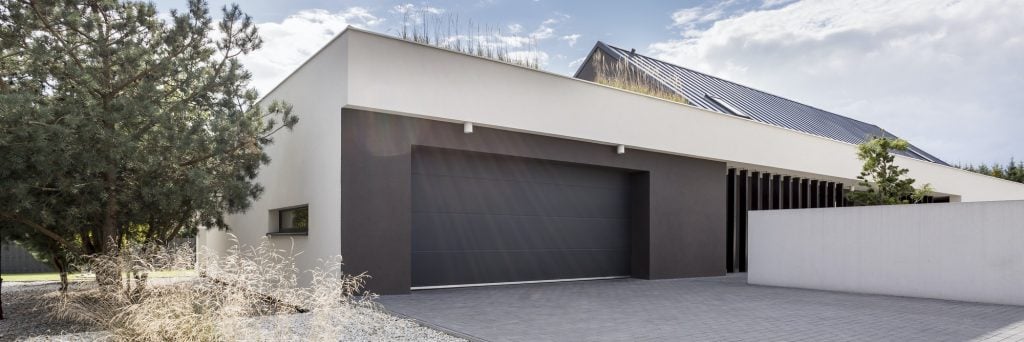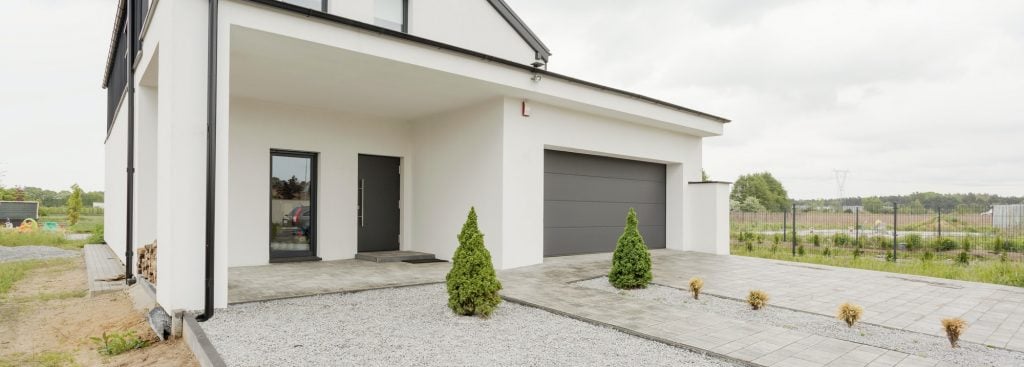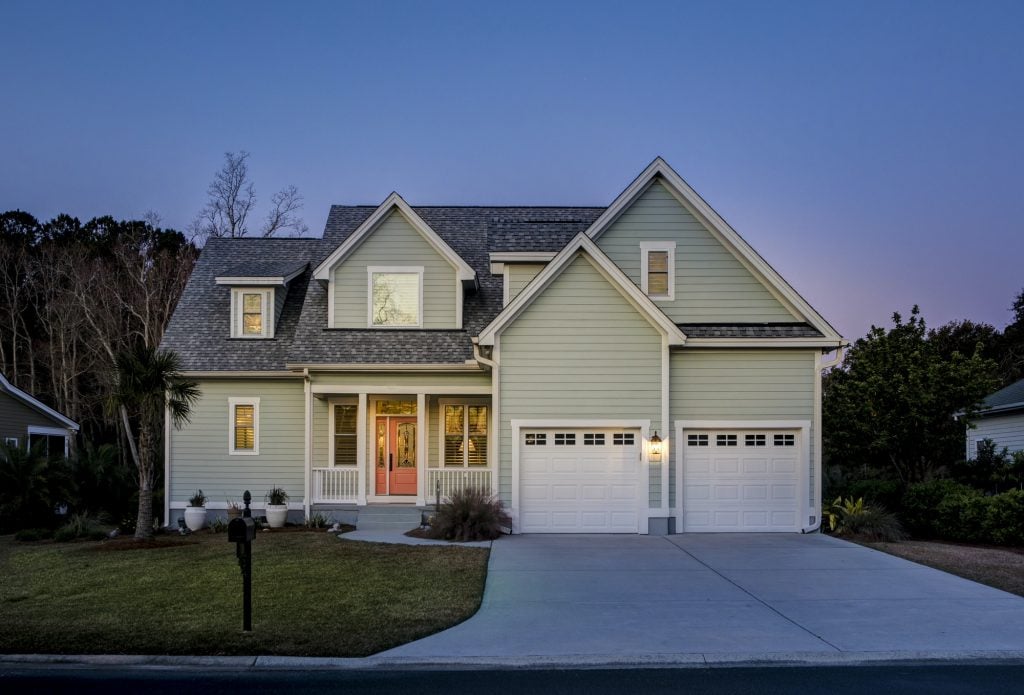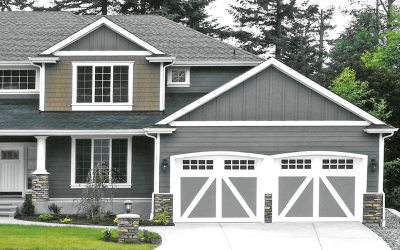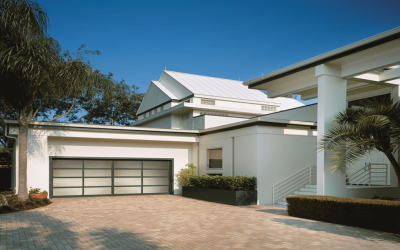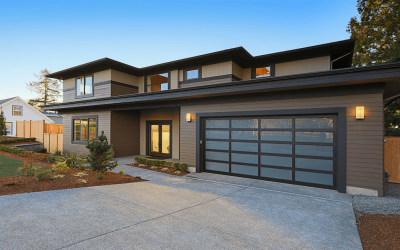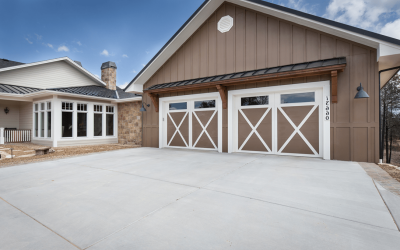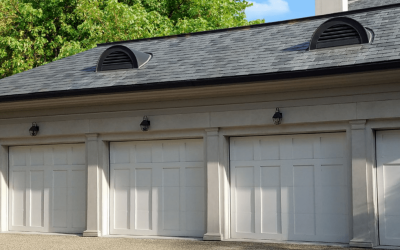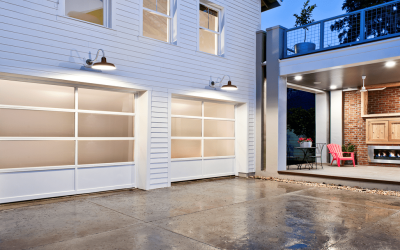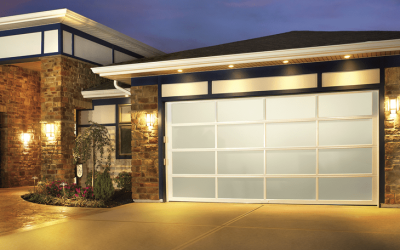Garage Door Top Fixtures
The top fixtures on a garage door carry the top rollers. Most top fixtures are adjustable so the garage door can seal against the jambs and header.
Torsion Springs for Garage Doors
Torsion springs on a garage door are secured to a metal shaft that is located just above the door. The shaft sometimes passes through the middle of the garage door’s spring or springs, or it may even house the spring depending on the door system and design. Winding and unwinding as the door opens and closes, the torsion spring works to create a balanced system. The lift and cycle life of a torsion spring is determined by three characteristics. The determination is based on inside diameter, length and wire size. The torque of the spring determines the lift, and determines how much weight the spring can lift. Cycle life tells the number of times the garage door should be able to open and close before you can expect spring breakage.
Standard Torsion Springs
The most commonly used residential springs are standard torsion springs. One or two springs can usually be found on garage doors. Lightweight doors can usually operate fine with only one spring. When the door has only one spring, it can be mounted to the spring anchor bracket, which is located in the center of the shaft, which is directly above the garage door. There are situations in which the spring is designed with an offset mount where the technicians do not mount the spring anchor bracket directly above the garage door center.
In the event that two torsion springs are needed to balance the garage door, the springs are mounted to the spring anchor bracket right above the mid-section of the garage door. Two springs make the garage door safer, in the event that one spring breaks when the garage door is opened. The additional spring will help hold the door and keep it from falling. Falling could result in injury or property damage.
EZ-Set Torsion Springs
Although they look very similar to standard torsion springs, EZ-Set Torsion Springs have very different hardware. During the installation process, EZ-Set springs are mounted to the winders at the shaft ends. The shaft is an inch in diameter. The winder has the letter “L” or “R” which corresponds to the left or right of the garage door. Just like standard torsion springs for residential doors, usually one or two of these springs fit on the garage door shaft. Because most two-car garages have two of the EZ-Set torsion springs and single car garages require only one spring, this may not hold true with this design. Some lightweight two-car garage doors may only use one EZ-Set torsion spring. In such situations, the spring is mounted on the garage door’s left side.
When a garage door is wider, it may have two shafts that have a coupler in the middle to attach the two to each other. This additional hardware piece can save trouble as well as time during the replacement of EZ-Set torsion springs in situations when there is minimal space between the shaft end and the wall. Garage doors for two cars that have either a single spring or two springs require a center support bracket. Single car doors that do not have this particular kind of bracket, usually do not have anything that supports the middle of the shaft.
Wayne Dalton TorqueMaster Torsion Springs
The TorqueMaster torsion spring system that was designed by Wayne Dalton was designed so it would operate even safer than Clopay’s EZ-Set garage door system. This kind of garage door has either one or two springs located inside the shaft. These systems have a shaft with a cross-section that is not circular, but about a forth of the shaft reaches outward to form an edge. With this particular design, the spring stays fastened inside the shaft with the stationary cone, which in this case matches the shaft’s shape.
Earlier TorqueMaster garage doors have springs that are equipped with a winding cone that is on the opposite end that extends beyond the shaft end and passes through the center of the cable drum. This winding cone is set inside a special winder, enabling the torsion spring to be wound by an electric drill. The newer doors that are equipped with TorqueMaster springs are wound with a socket or wrench that use a ratchet system.
Plastic cable drums support the shaft ends. Wayne Dalton makes these TorqueMaster systems with three grooves sitting higher than the rest of the grooves. The rest of the grooves are set to give the cable a two-inch diameter as it wraps around the drum. The shaft’s center has a circular piece that fits on the center support bracket. As the garage door opens, the shaft and circular piece rotate in unison while remaining on the center bracket.
Standard Commercial Torsion Springs
Industrial and commercial garage doors usually have at least two torsion springs. While many of these doors require four or more torsion springs, they use one of four different setups, mixed, triplex, duplex and linear. These systems are very precise and have particular uses.
Linear – This particular design works best with wider garage doors, such as those for larger vehicles. Because these doors have to be wider and larger, they usually have four or more springs across the shaft. Installing the linear system is less expensive when it comes to springs and hardware.
The duplex system looks like it has two very large springs, with one being on each half of the garage door. Inside each of the torsion springs, though, is another spring that has a smaller inside diameter. With the duplex spring system supplying extra torque, it also supplies added lift from the torsion springs while not requiring any extra space on the shaft as some wider garage door systems may need.
Functioning much like the duplex system is the triplex system. This particular design has two springs that are located inside the outer spring.
A combination of the linear system as well as the duplex/triplex system is the mixed system. These systems use more than one set of duplex or triplex springs on each half of the garage door for better functioning. This kind of system is an option for installers in cases when the garage door shaft measures long enough to have the ability to hold multiple springs. If the garage door is heavy, it coule be very beneficial to have duplex spring sets in multiple pairs on the garage door.
Unfortunately, those who use the duplex and triplex systems for their garage doors may find it difficult to find an inner spring that is broken.
Because commercial and industrial doors do have the tendency to weigh more, the torsion springs used in these particular garage door settings most often have a larger inside diameter plus larger wire size than those found in residential garage door torsion springs. While torsion springs that are found on many garage doors use shafts with an outside diameter of an inch, some doors instead require a larger shaft with a 1-1/4″ outside diameter. This particular kind of shaft can only be used with bearings, winding cones and cable drums that have openings that measure 1-1/4″ for the shaft. Doors that are heavier do often use shafts that are solid hollow shafts are used for lighter doors. While many solid shafts are keyed, they have a groove located along the shaft length that when coupled with a shaft key, prevent the spinning loose of the cable drums.
Steel Rolling Door Torsion Springs
Unlike most garage doors, steel rolling doors are not comprised of sections. These garage doors are joined by slats that interlock and enabling a greater range of mobility as the door opens. The extra mobility that has become available enables the garage door to wrap around the barrel securely. Inside that barrel is the torsion spring. Counterbalancing the door weight to make it operate easier is a benefit of the torsion spring. With the barrel remaining closed on both ends, the springs that are inside are not visible. Although many doors incorporate the use of one spring, some of the rolling doors that are of heavier steel need extra springs for the weight.
Two head plates are equipped on the barrel, being placed on each side. Two sections of the shaft go through the bearing that is in the head plates then on into the barrel. Inside that barrel, the shaft is supported by idler brackets. These brackets are fastened to the barrel by screws or pins. The torsion springs are supported by the shaft. One of those idler brackets acts as a spring anchor bracket that serves as the torsion spring anchor. Usually, the other end of spring has a cone attached that uses setscrews to secure to the shaft. Some springs do have a special loop on the end that secures with a rod to the barrel.
The steel rolling door has a winding unit on one side. There is a piece of angle that is located above the winding wheel and secured to the door’s head plate. This setup supports a bolt that setts inside the winder to hold the shaft in place. Spring tension can be adjusted by putting a winding bar inside another hole located in the winding wheel, while pulling down on the bar and by removing the bolt to enable the shaft and the wheel to both turn. Winding down on the winding wheel adds spring tension. The shaft on the other side of the barrel has a sprocket assembly attached. A chain hoist or opener is usually added to help operate the door.
Rate this page

